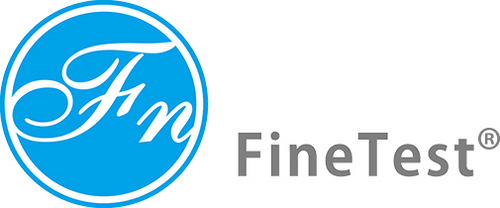Product Description
Recombinant Mouse Kallikrein-8 (Klk8) is available at Gentaur for Next week Delivery.
Gene Name: Klk8
Alternative Names : Neuropsin
Expression Region : 33-260aa
AA Sequence : ILEGRECIPHSQPWQAALFQGERLICGGVLVGDRWVLTAAHCKKQKYSVRLGDHSLQSRDQPEQEIQVAQSIQHPCYNNSNPEDHSHDIMLIRLQNSANLGDKVKPVQLANLCPKVGQKCIISGWGTVTSPQENFPNTLNCAEVKIYSQNKCERAYPGKITEGMVCAGSSNGADTCQGDSGGPLVCDGMLQGITSWGSDPCGKPEKPGVYTKICRYTTWIKKTMDNRD
Sequence Info : Full Length of Mature Protein
Tag Info : N-terminal 6xHis-tagged
Theoretical MW : 27.1 kDa
Storage Buffer : Tris/PBS-based buffer, 5%-50% glycerol. If the delivery form is lyophilized powder, the buffer before lyophilization is Tris/PBS-based buffer, 6% Trehalose, pH 8.0.
Endotoxin Level : Not tested-
Biological Activity : Not tested
Storage : Short term: -20°C; Long term: -80°C. Minimize freeze and thaw cycles.
Research Area : Signal Transduction
Restriction : For Research Use Only. Not for use in diagnostic procedures, drug use, or for administration to humans or animals.
Relevance : Serine protease which is capable of degrading a number of proteins such as casein, fibrinogen, kininogen, fibronectin and collagen type IV. Also cleaves L1CAM in response to increased neural activity. Induces neurite outgrowth and fasciculation of cultured hippocampal neurons. Plays a role in the formation and maturation of orphan and small synaptic boutons in the Schaffer-collateral pathway, regulates Schaffer-collateral long-term potentiation in the hippocampus and is required for memory acquisition and synaptic plasticity. Involved in skin desquamation and keratinocyte proliferation. Plays a role in the secondary phase of pathogenesis following spinal cord injury
Function : Serine protease which is capable of degrading a number of proteins such as casein, fibrinogen, kininogen, fibronectin and collagen type IV. Also cleaves L1CAM in response to increased neural activity. Induces neurite outgrowth and fasciculation of cultured hippocampal neurons. Plays a role in the formation and maturation of orphan and small synaptic boutons in the Schaffer-collateral pathway, regulates Schaffer-collateral long-term potentiation in the hippocampus and is required for memory acquisition and synaptic plasticity. Involved in skin desquamation and keratinocyte proliferation. Plays a role in the secondary phase of pathogenesis following spinal cord injury.
Involvement in disease :
Subcellular location : Secreted, Cytoplasm
Protein Families : Peptidase S1 family, Kallikrein subfamily
Tissue Specificity : Expressed in the limbic system of mouse brain and is localized at highest concentration in pyramidal neurons of the hippocampal CA1-3 subfields. Also detected in spinal cord gray matter and in keratinized stratified epithelia of epidermis, hair, tongue, palate, nasal cavity, pharynges, esophagus and forestomach. In skin and mucus membranes, expressed in stratum spinosum and stratum granulosum. Expressed during estrus in vaginal epithelial cells but not stromal cells. Within the vaginal epithelium, expressed in prickle cells, granular cells and parakeratotic cells but not in basal cells. Not expressed in uterus. Expressed in the keratinocytes.
Paythway :
Uniprot ID : Q61955
 Euro
Euro
 British Pound
British Pound
 US Dollar
US Dollar








